What is HSS Tubing?
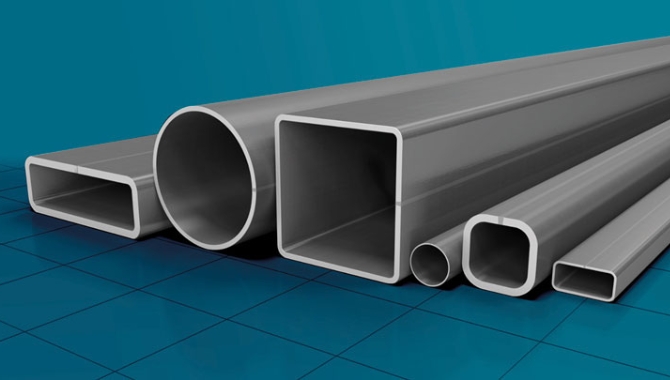
High-strength steel product with a hollow cross-section is named as Hollow Structural Section or HSS Tubing. It comes in square, rectangular or circular shapes. These shapes are made by cold-rolling steel coils and then welding them using ERW process. This fabrication method manufactures a product with consistent geometry and outstanding strength-to-weight ratio. These traits set it apart from traditional steel pipes.
Engineers and manufacturers like HSS tubing for its remarkable tolerances, mechanical properties and dimensions. This makes it a go-to choice for structural uses in transportation, construction and industrial sectors.
Specifications of HSS Tubing
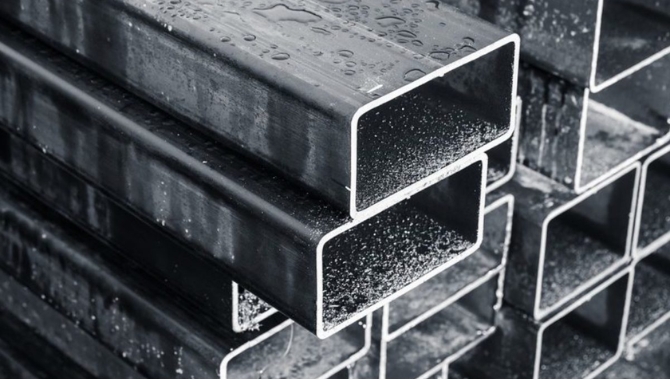
The performance and structural strength of HSS tubing depends very much on its specifications. These specs are size ranges, dimensional tolerances and material properties:
Dimensional Tolerances and Sizes
At the core of HSS tubing’s precision are its sizes and dimensional tolerances. These parameters play a key role in easy integration of HSS members into different designs.
Size Ranges
HSS tubing comes in a broad range of sizes to meet different structural needs:
- Square HSS: Usually 1/2 inch to 16 inches
- Rectangular HSS: Ranges from 1/2 inch x 1 inch to 12 inches x 20 inches
- Round HSS: Common diameters are 0.75 inch to 20 inches
For those projects that need bigger dimensions, the ASTM A1065 covers oversized HSS tubing, with sizes up to 48″ square. Usual wall thicknesses of HSS tubing range from 0.065″ to 1″.
Wall Thickness and Cross-Sectional Tolerances
ASTM A500 set strict rules for hollow structural section tubing wall thickness. The minimum thickness has to be more than 90% of the stated value. On the other hand, the maximum (not counting weld seams) can’t go over 110%. For square and rectangular HSS, measurements are taken at the middle of the flat sides.
The outside dimension tolerances change with size:
- For sizes 2 1/2″ and under: ±0.020″
- Over 2 1/2″ to 3 1/2″: ±0.025″
- Over 3 1/2″ to 5 1/2″: ±0.030″
- Over 5 1/2″: ±1% of the largest outside dimension
These specifications ensure best performance and fit across uses.
Material Properties
The abilities of HSS tubing in structural uses depends on its material qualities. These traits decide strength, durability and its suitability for specific projects.
Strength Characteristics
HSS tubing is a popular pick for load-bearing uses thanks to its fantastic strength even with a light weight. ASTM A500 Grade B has a 46,000 psi yield strength, while Grade C hits 50,000. Their tensile strengths are 58,000 and 62,000 psi respectively. The hollow cross-section helps make HSS lightweight and simultaneously gives great buckling strength and torsional resistance.
With elongation of 21-23% for 2-inch lengths, HSS shows impressive ability to stretch before breaking. This property boosts its capacity to bear up against multi-directional loads in lots of structural situations.
Grades of HSS Tubing
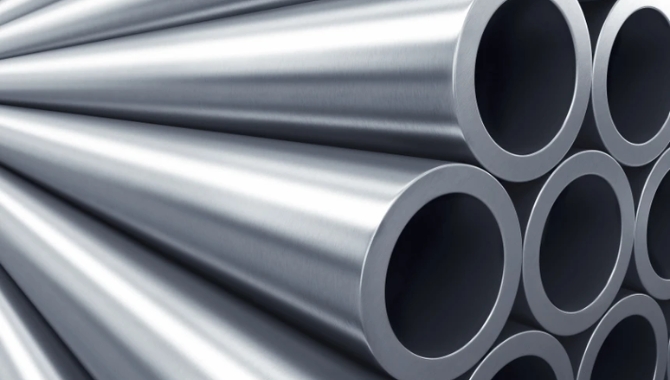
When looking at HSS tubing, there are many grades to choose from. Each grade has a distinct mix of properties and are made for particular uses. Knowing these options will help you pick the right one according to your need.
ASTM A500 Grades
ASTM A500 is a common standard for structural steel tubes both seamless and cold-formed. It covers several grades. Grade B and Grade C are used mostly in structures.
Grade B
As the most popular choice for HSS tubing, Grade B strikes a good balance between shapeability and strength. It machines and welds well which make it a good choice for many structural uses.
| Property(min) | Round Sections | Shaped(Square & Rectangle) Sections |
| Tensile Strength | 58,000 psi | 58,000 psi |
| Yield Strength | 42,000 psi | 46,000 psi |
| Elongation in 2 in. | 23% | 23% |
The composition for Grade B is as follows:
| Element | C | P | S | Mn | Cu |
| Grade B(Max %) | 0.26 | 0.035 | 0.035 | 1.35 | 0.20 |
Grade C
For scenarios needing better load-bearing ability, ASTM A500 Grade C is the best choice. While keeping good weldability, it gives better structural performance than Grade B.
| Property(min) | Round Sections | Shaped Sections |
| Tensile Strength | 62,000 psi | 62,000 psi |
| Yield Strength | 46,000 psi | 50,000 psi |
| Elongation in 2 in. | 21% | 21% |
Grade C’s composition is:
| Element | C | Mn | P | S | Cu |
| Grade C (Max %) | 0.23 | 1.35 | 0.035 | 0.035 | 0.20 |
ASTM A1085 Grade
A1085 is a high-performance standard for HSS tubing. It has extra testing needs and stricter tolerances compared to A500. This grade gives better design flexibility and structural efficiency. Its decreased overstrength is the reason for its increased seismic performance.
| Property | Value |
| Maximum Yield Strength | 70 ksi |
| Minimum Yield Strength | 50 ksi |
| Minimum Tensile Strength | 65 ksi |
| Minimum Elongation in 2 inches | 21% |
| Charpy V-notch Impact Test | 25 ft-lb at 40°F |
The composition of ASTM A1085 is given in the table.
| Element | C | Mn | S | P | Ni | Cu | Cr | Mo | Nb | V |
| Max % | 0.23 | 1.35 | 0.035 | 0.035 | 0.40 | 0.40 | 0.30 | 0.15 | 0.05 | 0.05 |
CSA G40.21
The Canadian standard CSA G40.21 defines many grades of structural steel including HSS tubing. These grades are classified by weldability, toughness and strength. For general uses, 44W (300W) is the most used grade. It provides good strength and weldability. G40.21 also has higher strength options and grades with better toughness and corrosion resistance for special scenarios.
| Grade | Min Tensile Strength | Min Yield Strength | Min Elongation in 2 inch |
| 44W (300W) | 450 MPa (65 ksi) | 300 MPa (44 ksi) | 20% |
| 50W (350W) | 450 MPa (70 ksi) | 350 MPa (50 ksi) | 19% |
The chemical composition for 44W (300W) is:
| Element | C | Mn | S | Si | P |
| Maximum % | 0.22% | 1.50% | 0.050% | 0.40% | 0.040% |
Note: The ‘W’ suffix represents weldable grade.
Specialty Grades

To meet special structural and environmental requirements, specialty grades of HSS tubing provide greater properties.
A847:
A847 grade covers a high-strength, low-alloy (HSLA) weathering steel. Its maximum available sizes are similar to A500. Its extraordinary atmospheric corrosion resistance makes it perfect for exposed structural uses like highway sign supports and pedestrian bridges.
| Property | Value for ASTM A847 |
| Min Tensile Strength | 70 ksi |
| Min Yield Strength | 50 ksi |
| Minimum Elongation in 50.8 mm(2 in.) | 19% |
A847’s chemical composition is:
| Element | C | Mn | S | Si | P | Cu | Ni | Cr |
| Max % | 0.19 | 1.35 | 0.05 | 0.75 | 0.04 | 0.20-0.40 | 0.20-0.50 | 0.40-0.70 |
A1065
ASTM A1065 standard is for larger, cold-formed and high-strength low-alloy rectangular and square structural tubing that are beyond the sizes of A500 grade. This grade gives better formability and strength that is suitable for big structural applications like convention centers, stadiums and industrial buildings. The two grades available for A1065 are grade 50 and 50W.
| Property of A1065 | Grade 50 | Grade 50W |
| Min Yield Strength | 50 ksi | 50 ksi |
| Min Tensile Strength | 60 ksi | 70 ksi |
| Min Elongation in 2 in. | 21% | 18% |
The chemical composition of A1065 is:
| Element | C | Mn | S | P | Cu | Si |
| Max Percentage | 0.23% | 1.65% | 0.050% | 0.040% | 0.35% | 0.50% |
Manufacturing Processes:
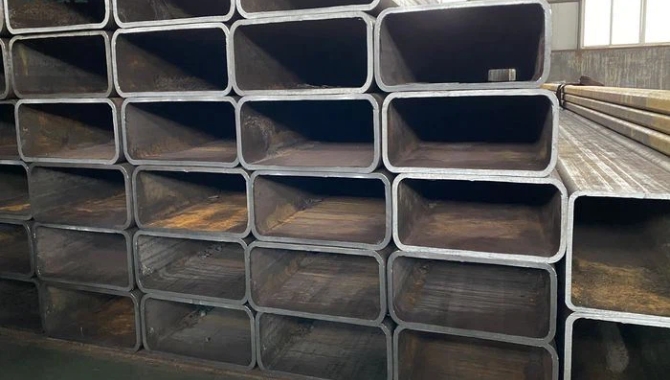
Behind every piece of HSS tubing is an intricate manufacturing process. This sophisticated combination of technology and precision transforms raw materials into structural wonders. Let’s explore the complicated steps that create HSS tubing.
Material Selection
Selecting the right steel starts the HSS tube production process. Top-quality carbon steel coils, that meet ASTM A1018 or A1011 standards, are the main material used. Manufacturers use tensile testing machines and spectrometers to analyze the strength properties and chemical composition of the steel. This confirms that it meets all the required specifications.
Slitting of Steel Coils
The next phase is changing wide steel coils into narrower strips. High-accuracy slitting lines are used for this. Firstly, steel gets uncoiled and then passed through rotating knives. Next, it is re-coiled into thinner strips. CNC systems often control the slitting width precision. To reduce waste and increase efficiency, some manufacturers use advanced software like Trim Optimization or PLUS Slitting.
Forming Process
Changing flat steel into a tube needs a series of careful steps. Process starts as the slit coil passes through 5 or more forming rolls, each with a role. The first creates a slight bend. Subsequent rolls progressively deepen the curve making sure of even stress distribution. By the final rolls, it’s a U-shape and is about 70% of the final tube form.
Electric Resistance Welding (ERW)
ERW is the cornerstone of hollow structural section manufacturing as it forms a sturdy bond lengthwise along the tube. This method brings the formed steel edges together and then a high-frequency electrical current (usually 100 to 500 kHz) is applied. The steel’s electrical resistance produces localized heat at the joint, and temperature reaches up to 2700°F. Pressure, that is applied at the same time, forges the heated edges together and makes a solid-state weld without any filler material.
Seam Annealing
After welding, seam annealing normalizes the Heat Affected Zone (HAZ) along the joint. Induction coils heat the welded part to around 1,700°F (927°C), then quickly cool it. This relieves residual stresses that improves ductility and adds to the weld seam’s total mechanical properties. Seam annealing usually uses 450 to 600 kW power with 1 to 3 kHz frequencies.
Sizing and Shaping
The next step is sizing and shaping the HSS tubing to get final tolerances and dimensions. An array of rollers slowly forms the tube into the wanted shape that can be round, square, or rectangular. For square and rectangular HSS, makers limit the max outside corner radius to three times the nominal wall thickness.
Cutting to Length
The last step of making HSS tubing is cutting it to exact lengths using high-tech gear. The most used techniques are laser cutting and saw cutting. Band saws or Circular saws with carbide-tipped blades can reach tolerances of ±1/16 inch for lengths up to 20 feet in Saw cutting.
Laser cutting gives even tighter tolerances of ±0.005 inch and can make complicated end shapes. CNC-controlled cutting systems make sure of less waste and consistency. When cutting ASTM A500 Grade C HSS, speeds generally range from 20 to 40 feet per minute, depending on the cutting method used and wall thickness.
Heat Treatment
ASTM A1085 Supplement S1 and CSA G40 Class H let optional heat treatment of HSS tubing. This includes heating the tubing to at least 850°F (450°C) then air cooling it. By alleviating leftover stresses from cold forming, this normalizing treatment increases toughness and ductility.
Programmable furnaces with strict ±25°F temperature control carefully manage the heat cycle. Depending on section size, the soak time usually range from 30 to 60 minutes. It results in more consistent mechanical properties across the section, with yield strengths generally 5-10% lower than as-formed stuff.
Surface Finishing
HSS tubing often gets surface finishing to improve its durability and looks. Common processes are galvanizing, cleaning and painting. In cleaning, shot blasting is usually the first step to take off scale and prep the surface for coating. For painting, manufacturers mostly put on zinc-rich primers, then polyurethane or epoxy topcoats which reach 3-5 mils dry film thickness.
Hot-dip galvanizing is another choice. It includes dipping the HSS in 850°F (450°C) molten zinc to make a 3.5-5 mil thick zinc coating. Architecturally exposed HSS may get fancier treatments like anodizing or powder coating. These finishing methods not only better the aesthetic appeal but also give major corrosion resistance. In moderate environments, galvanized coatings can offer up to 75 years of protection.
Applications of HSS Tubing

The flexible nature of HSS tubing is clear from its many uses. From soaring skyscrapers to sturdy bridges, HSS tubing’s fantastic strength-to-weight ratio makes it vital in modern building. Here we will look at some of the common HSS’ applications.
Structural Frameworks in Buildings
Construction of building depends greatly on HSS tubing for horizontal cross beams and vertical supports. High-rises take advantage of HSS columns’ better buckling resistance and axial load ability. The closed form of HSS gives torsional stability which makes it best for outriggers and transfer girders in tall buildings. Moment-resisting frames usually use HSS members because of their symmetrical cross-section. This very cross-section simplifies connection design and boosts performance in two-axis bending.
Bridge Construction
Bridge designers mostly use HSS tubing for its important structural qualities. Truss bridges use HSS members as the main load-carrying structure. It successfully spreads forces in bridges alongside reducing material needs. The high buckling resistance of HSS permits longer unsupported spans in bridge plans. Cable-stayed bridges also gain advantages from HSS, as its smooth exterior decreases wind drag. This reduced wind drag improves the overall performance of the bridge in wind.
Transportation Infrastructure
Structural strength and durability make HSS tubing a popular choice for transportation infrastructure. Highway guardrails regularly use HSS because it can absorb impact energy during collisions and as a result greatly improve road safety. When galvanized, HSS resists corrosion well that’s why it’s perfect for building noise barriers along busy roads. There it’ll last despite harsh conditions.
Seismic-Resistant Structures
HSS tubing’s suitable ductility and strength-to-weight ratio gives it an important role in earthquake-resistant buildings. For example, moment-resisting frames gain advantages from HSS columns. These provide considerable strength in two directions and twisting resistance which is important for handling shaking forces during earthquakes.
In braced frame systems, HSS braces give high resistance to buckling and compressive strength. This is necessary for keeping stability under the cyclic loading conditions which is common during seismic events.
Agricultural and Industrial Buildings
HSS tubing is great for industrial construction and agricultural projects. Greenhouse frames made from HSS give strong support while reducing shadows which is important for helping plants grow. Galvanized HSS resists corrosion so it lasts a long time even in humid conditions.
Industrial places also benefit from HSS in conveyor setups and equipment support. Its extraordinary strength-to-weight ratio means you can have longer distances between supports which will maximize floor area. The smooth surface of HSS makes cleaning easy which is really important in food processing sites where good hygiene is a must.
Barriers and Protective Structures
The impact resistance and high strength-to-weight ratio of HSS tubing make it perfect for protective structures and sturdy barriers. Highway guardrails using HSS, absorb collision energy better which aid in lowering occupant injuries and vehicle damage.
HSS’s closed shape gives good torsional rigidities and keeps the barrier intact when hit. In blast-proof buildings, HSS members shine in energy absorption and flexibility. Their consistent cross-section allows expected bending under big loads. This increases building resilience in military bases and high-security sites.
Railway and Power Transmission Towers
Railway and electricity transmission towers mostly use HSS tubing because of its great wind resistance and compressive strength. Railway overhead line supports benefit from HSS parts which give stable help for overhead wires along with reducing visual obstruction. The high strength-to-weight ratio of HSS makes slimmer and taller designs possible, which help cut material expenses and foundation needs.
Power transmission towers use HSS for their extraordinary buckling resistance under combined side and straight loads. Also, the closed shape of HSS decreases wind-caused vibrations and ice buildup that is important for keeping structural soundness in harsh conditions.
Conclusion
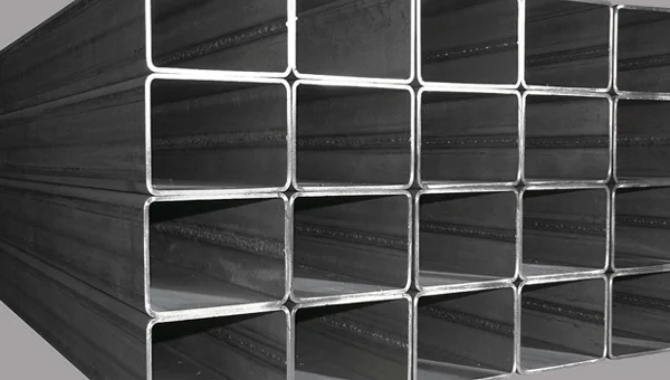
HSS tubing is a total game-changer for structural design. Its outstanding strength-to-weight ratio, cost-efficiency and flexibility have made it very important for all kinds of uses. Many size and grade options of HSS have made it indispensable in multiple sectors from autos to buildings. As construction industry is moving ahead, it keeps being the number one pick of architects and engineers. For customized HSS fabrication, contact KDM Fabrication today.
FAQs
What Should You Consider When Choosing HSS Tubing for a Project?
When picking HSS tubing keep these important factors in your mind: needed strength-to-weight ratio, operating conditions and load capacity. Check which ASTM standard (A1085, A500 or specialty grades) suits your project needs. Analyze dimensional precision, cross-section shape and wall thickness to get the best performance. Additionally, see if corrosion resistance is required and also consider any other special seismic or fatigue needs.
How Does HSS Tubing Stack Up Against Traditional Steel Pipes?
HSS tubing has several advantages over conventional steel pipes. We have summarized most of them in this table:
| Property | HSS Tubing | Steel Pipe |
| Strength-to-weight ratio | Higher | Lower |
| Resistance to torsion and bending | Superior | Inferior |
| Variety of cross-sections | Square, rectangular, round | Mainly round |
| Consistency of properties | More uniform | Can be variable |
| Use | Used for structural support | Usually used for fluid transport |
| Cost | More initial cost but cost-effective in long-term structural applications | Lower initial cost |




